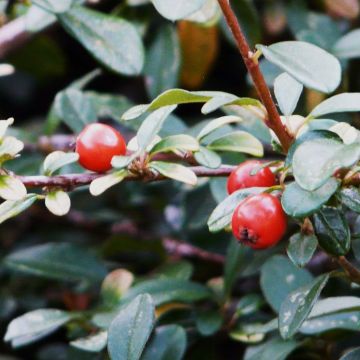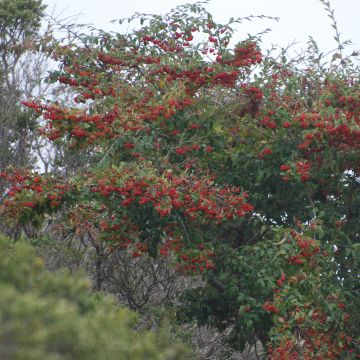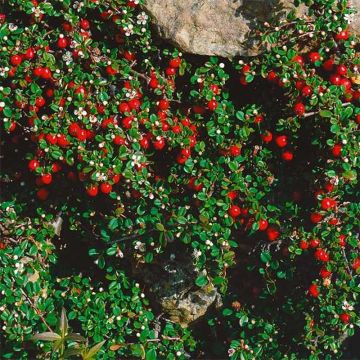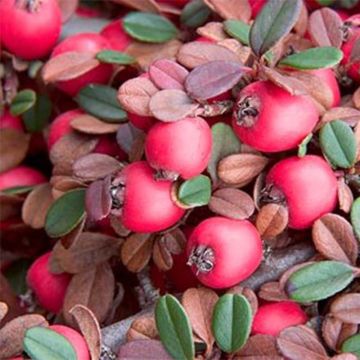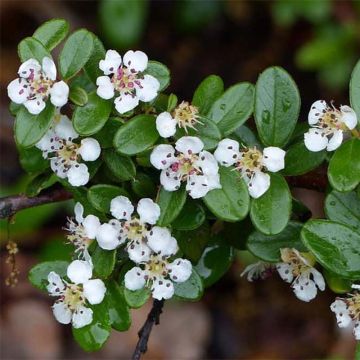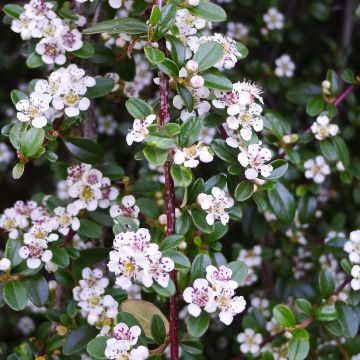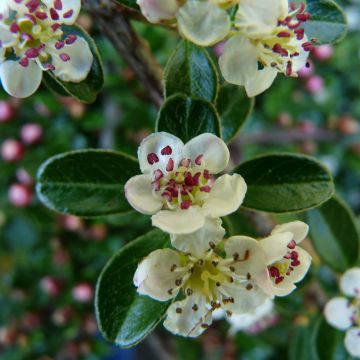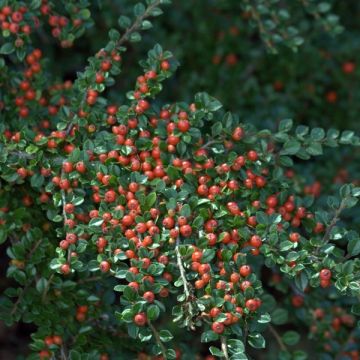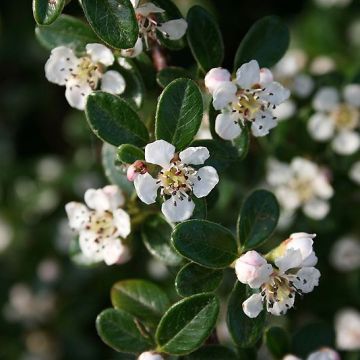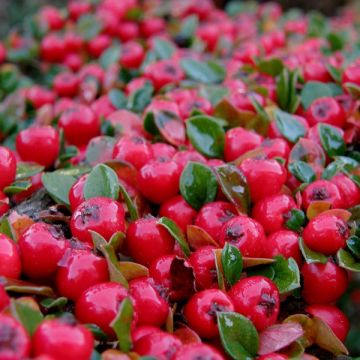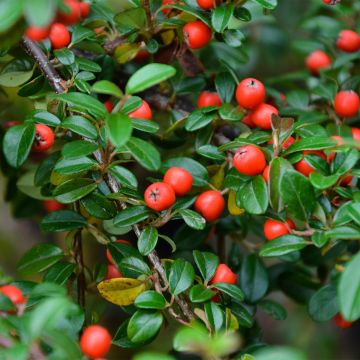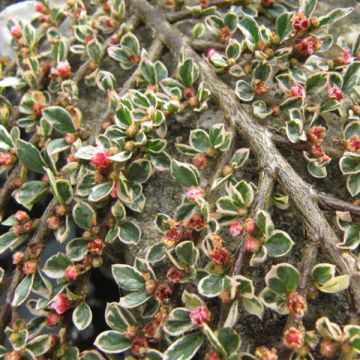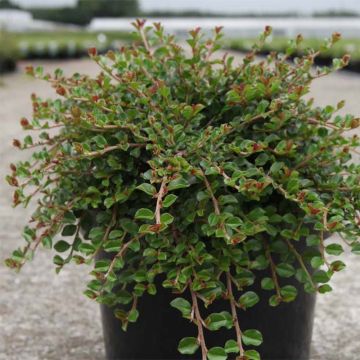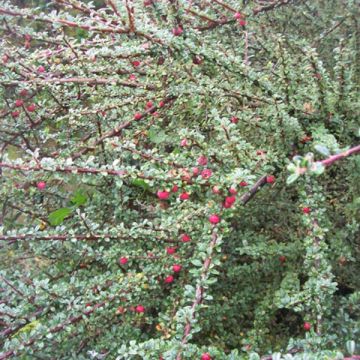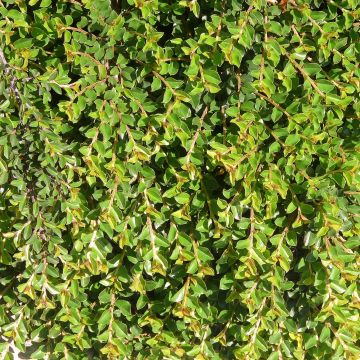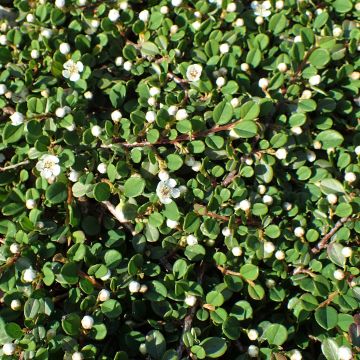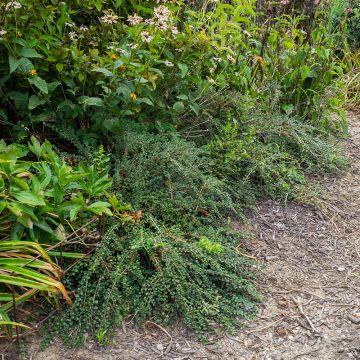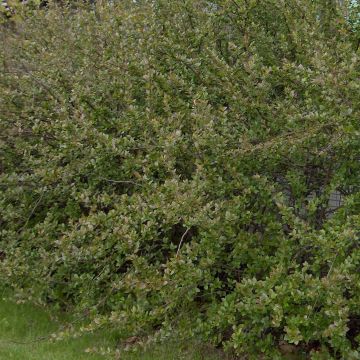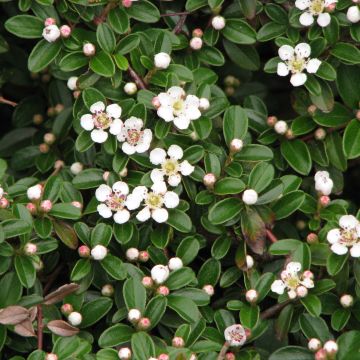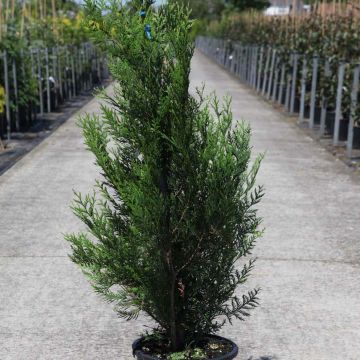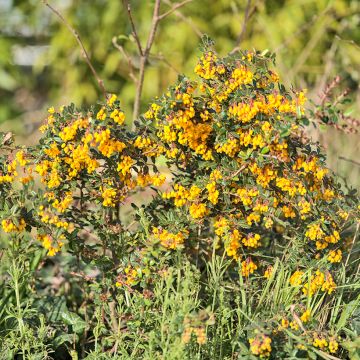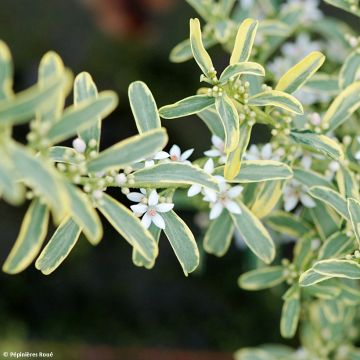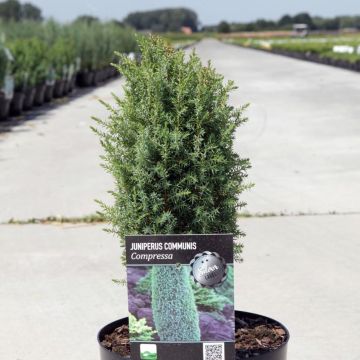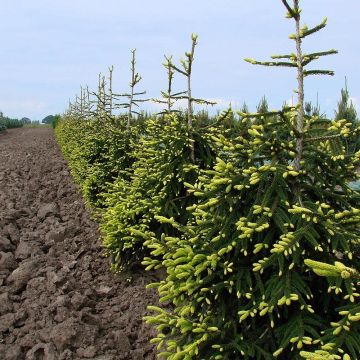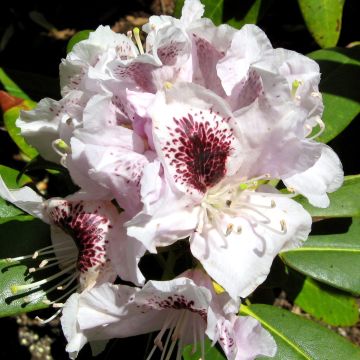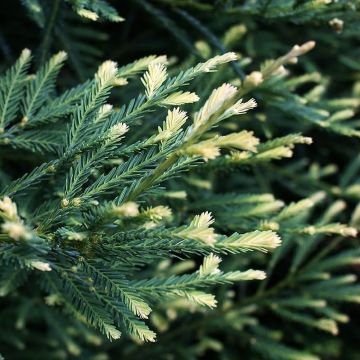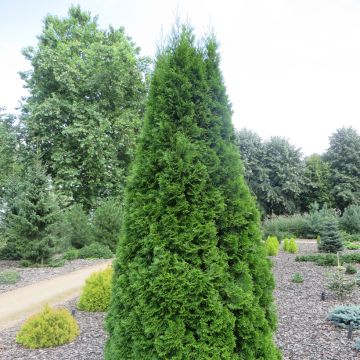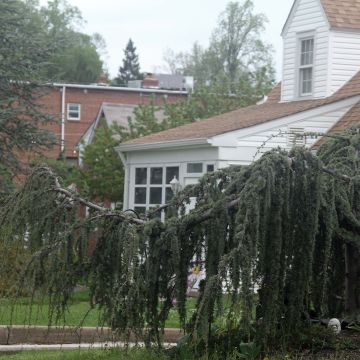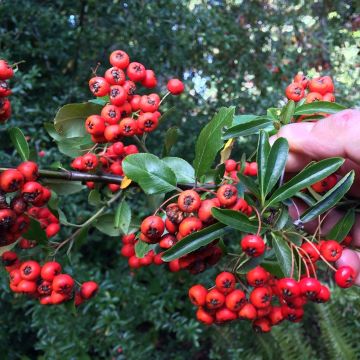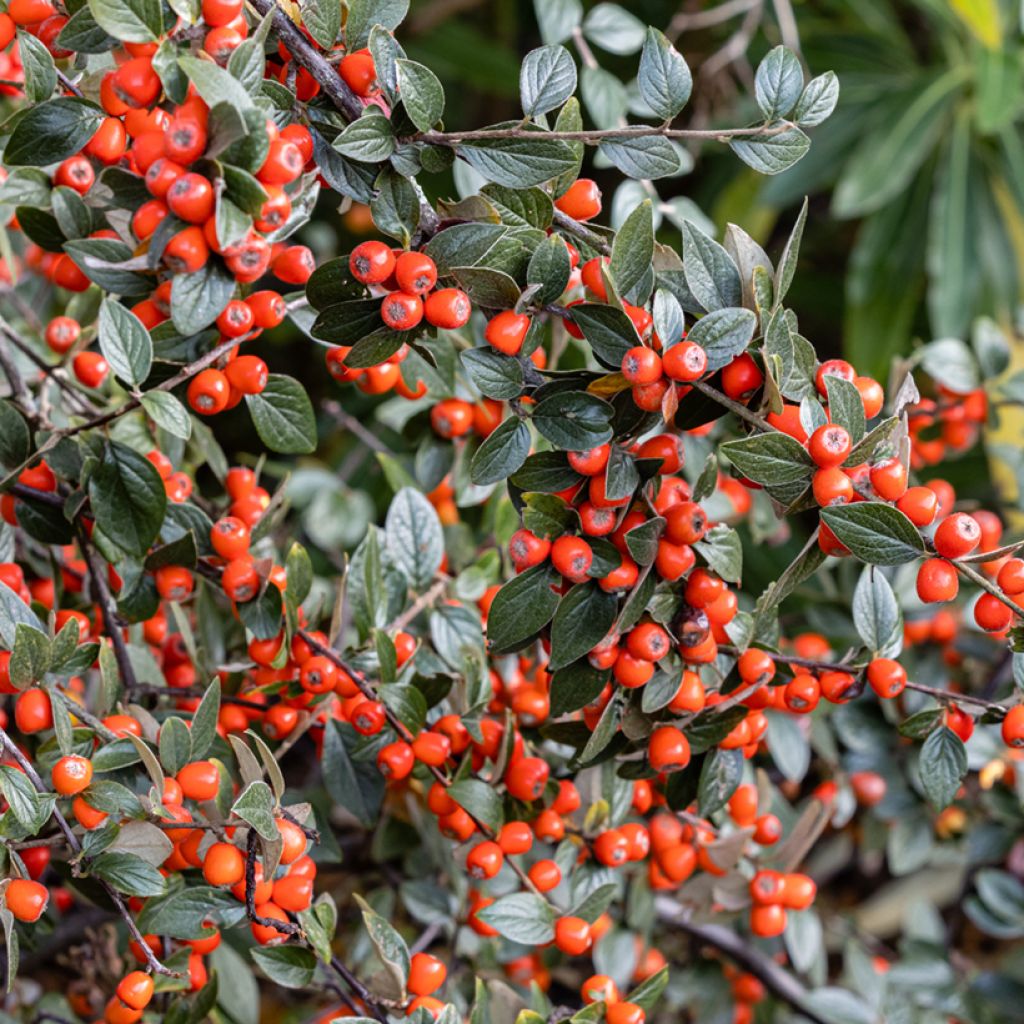

Cotoneaster simonsii
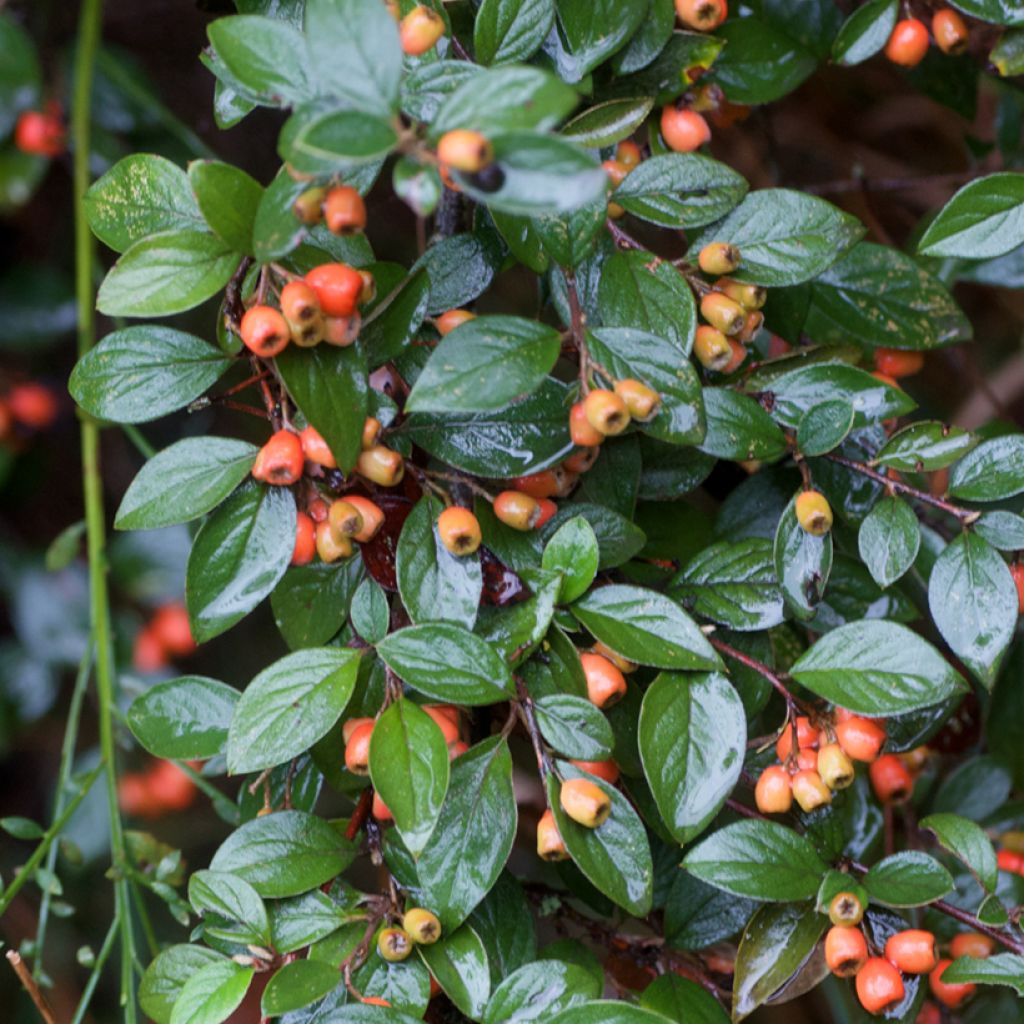

Cotoneaster simonsii
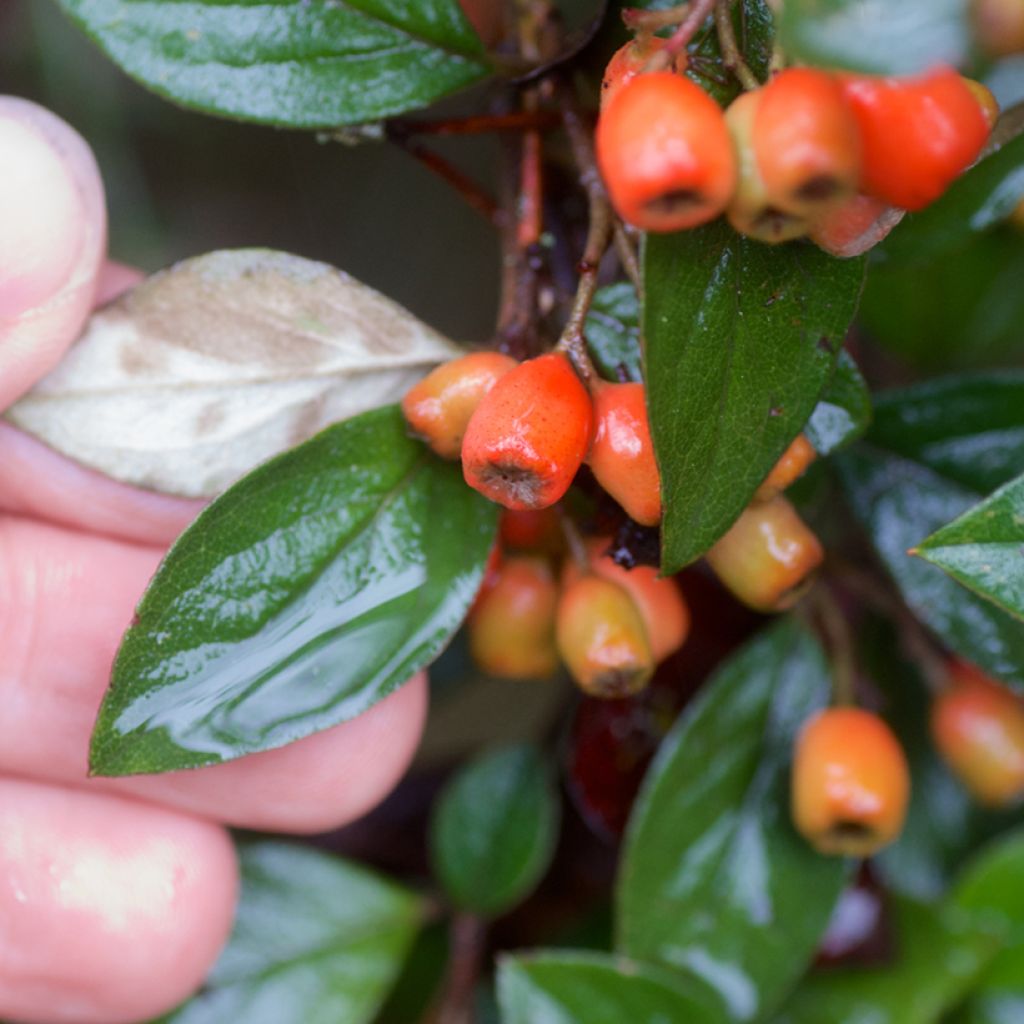

Cotoneaster simonsii
Cotoneaster simonsii
Cotoneaster simonsii
Himalayan cotoneaster
Very good plant, vigorous. Resembles Coteaster franchetti but with a more rigid and erect port. Interesting. Worth discovering.
Michel RIVIERE, 31/08/2024
Why not try an alternative variety in stock?
View all →This plant carries a 24 months recovery warranty
More information
We guarantee the quality of our plants for a full growing cycle, and will replace at our expense any plant that fails to recover under normal climatic and planting conditions.
From €5.90 for pickup delivery and €6.90 for home delivery
Express home delivery from €8.90.

Does this plant fit my garden?
Set up your Plantfit profile →
Description
Cotoneaster simonsii also known as Himalayan Cotoneaster, is a large semi-evergreen bush that is very cold and drought resistant, with beautiful fruiting. Its flowering is appreciated by bees and its beautiful scarlet berries feed birds at the end of the season. These qualities make it an excellent plant for a country hedge. It is easy to cultivate in any well-drained soil, even dry in summer.
Cotoneaster simonsii is a bush of the rose family, just like its cousins the pyracanthas. It is native to Nepal, eastern Himalaya, Assam, and Myanmar in northern India. It has been introduced to Europe and other regions of the world where it is sometimes considered invasive.
The growth of the Himalayan Cotoneaster is moderately fast and it has an upright habit. Over time this bush forms a mass almost as wide as it is tall, reaching an average height and spread of 2.5 m (8 ft). Its branches are stiff, reddish-brown, and hairy. This cotoneaster blooms in May-June, with tiny nectar-rich flowers with 5 white petals, grouped in 2 or 3. The flower buds are pink. The flowers are followed by fruits, ripening in September-October. These are oval berries measuring 6.5 to 11 mm (0.3 to 0.4 in) long and 5.4 to 8.4 mm (0.2 to 0.3 in) in diameter, shiny, vermillion red, ornamental and sought after by birds. The foliage of this bush is semi-evergreen in winter. It is composed of small alternate leaves, closely arranged, ovate to elliptical, 2.4 to 3.5 cm (0.9 to 1.4 in) long, medium to dark green, slightly glossy on the upper side, with a yellowish, waxy and slightly hairy underside.
Cotoneasters are highly appreciated by novice gardeners or those who don't have much time to dedicate to garden maintenance: they are accommodating, sturdy, and decorative shrubs for most of the year. This Cotoneaster can be used in shrub beds as well as informal hedges. It is a good border plant, for example in front of a grove of tall trees. Pair it with Berberis, laurel-tin, Milkflower Cotoneaster, Elaeagnus ebbingei, Photinias, and other cherry-laurels in a large evergreen, windbreak hedge. It will provide shelter and cover for all the small fauna in the garden. It can also be an unusual specimen planted alone, placed at the corner of a bed or at the end of a pathway.
Report an error about the product description
Cotoneaster simonsii in pictures
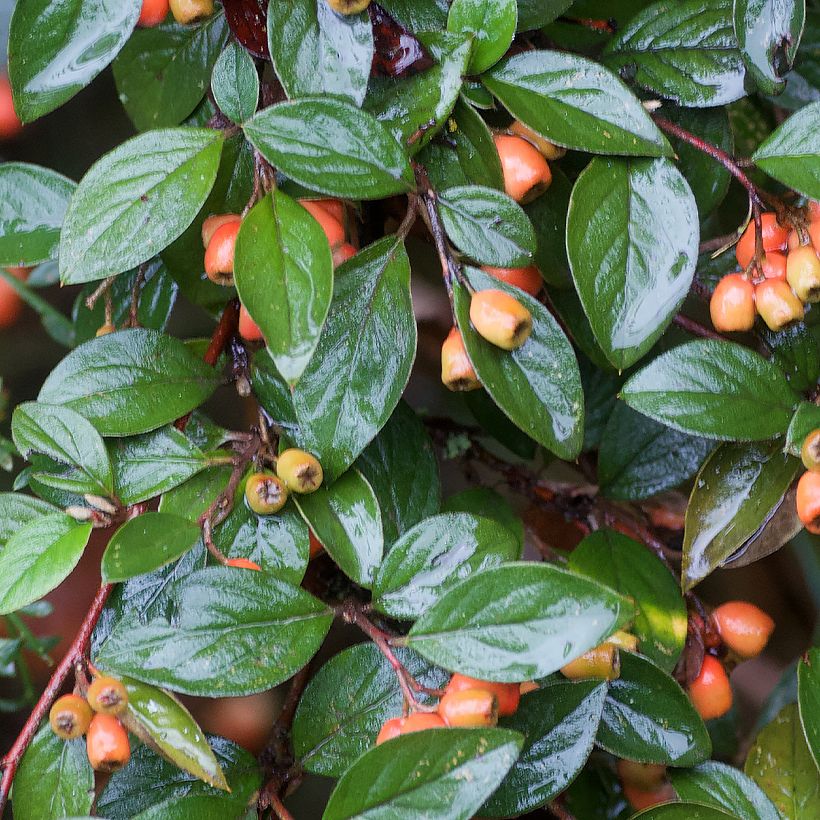

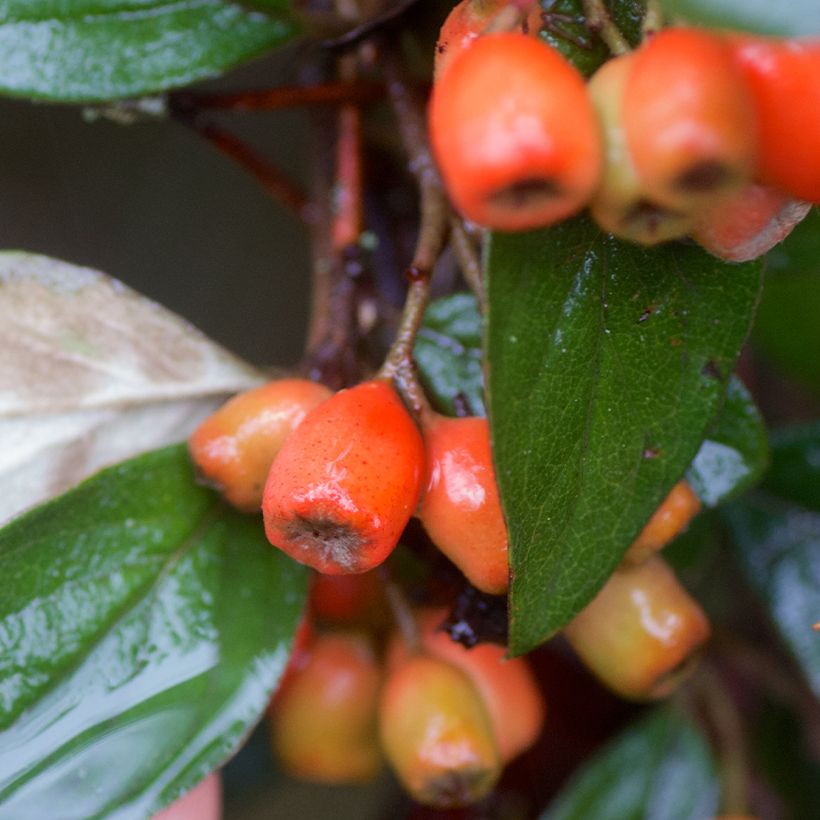

Plant habit
Flowering
Foliage
Botanical data
Cotoneaster
simonsii
Rosaceae
Himalayan cotoneaster
Himalayas
Other Cotoneaster
Planting and care
Position the Himalayan Cotoneaster (Cotoneaster simonsii) in a sunny position to promote abundant flowering. It can also be placed in a semi-shaded area. It only dilikes north-facing exposures. Plant it in ordinary (even limestone) soil, well-drained, even rocky, without excess water. You can plant it at any time of the year, except during freezing periods, extreme heat, and drought. This bush tolerates cold, as well as dry summers once it is well rooted. The Cotoneaster can be attacked by scale insects, aphids, and caterpillars. Bacterial fire blight and rot are disease risks.
Planting period
Intended location
Care
-
, onOrder confirmed
Reply from on Promesse de fleurs
Evergreen shrubs
Haven't found what you were looking for?
Hardiness is the lowest winter temperature a plant can endure without suffering serious damage or even dying. However, hardiness is affected by location (a sheltered area, such as a patio), protection (winter cover) and soil type (hardiness is improved by well-drained soil).

Photo Sharing Terms & Conditions
In order to encourage gardeners to interact and share their experiences, Promesse de fleurs offers various media enabling content to be uploaded onto its Site - in particular via the ‘Photo sharing’ module.
The User agrees to refrain from:
- Posting any content that is illegal, prejudicial, insulting, racist, inciteful to hatred, revisionist, contrary to public decency, that infringes on privacy or on the privacy rights of third parties, in particular the publicity rights of persons and goods, intellectual property rights, or the right to privacy.
- Submitting content on behalf of a third party;
- Impersonate the identity of a third party and/or publish any personal information about a third party;
In general, the User undertakes to refrain from any unethical behaviour.
All Content (in particular text, comments, files, images, photos, videos, creative works, etc.), which may be subject to property or intellectual property rights, image or other private rights, shall remain the property of the User, subject to the limited rights granted by the terms of the licence granted by Promesse de fleurs as stated below. Users are at liberty to publish or not to publish such Content on the Site, notably via the ‘Photo Sharing’ facility, and accept that this Content shall be made public and freely accessible, notably on the Internet.
Users further acknowledge, undertake to have ,and guarantee that they hold all necessary rights and permissions to publish such material on the Site, in particular with regard to the legislation in force pertaining to any privacy, property, intellectual property, image, or contractual rights, or rights of any other nature. By publishing such Content on the Site, Users acknowledge accepting full liability as publishers of the Content within the meaning of the law, and grant Promesse de fleurs, free of charge, an inclusive, worldwide licence for the said Content for the entire duration of its publication, including all reproduction, representation, up/downloading, displaying, performing, transmission, and storage rights.
Users also grant permission for their name to be linked to the Content and accept that this link may not always be made available.
By engaging in posting material, Users consent to their Content becoming automatically accessible on the Internet, in particular on other sites and/or blogs and/or web pages of the Promesse de fleurs site, including in particular social pages and the Promesse de fleurs catalogue.
Users may secure the removal of entrusted content free of charge by issuing a simple request via our contact form.
The flowering period indicated on our website applies to countries and regions located in USDA zone 8 (France, the United Kingdom, Ireland, the Netherlands, etc.)
It will vary according to where you live:
- In zones 9 to 10 (Italy, Spain, Greece, etc.), flowering will occur about 2 to 4 weeks earlier.
- In zones 6 to 7 (Germany, Poland, Slovenia, and lower mountainous regions), flowering will be delayed by 2 to 3 weeks.
- In zone 5 (Central Europe, Scandinavia), blooming will be delayed by 3 to 5 weeks.
In temperate climates, pruning of spring-flowering shrubs (forsythia, spireas, etc.) should be done just after flowering.
Pruning of summer-flowering shrubs (Indian Lilac, Perovskia, etc.) can be done in winter or spring.
In cold regions as well as with frost-sensitive plants, avoid pruning too early when severe frosts may still occur.
The planting period indicated on our website applies to countries and regions located in USDA zone 8 (France, United Kingdom, Ireland, Netherlands).
It will vary according to where you live:
- In Mediterranean zones (Marseille, Madrid, Milan, etc.), autumn and winter are the best planting periods.
- In continental zones (Strasbourg, Munich, Vienna, etc.), delay planting by 2 to 3 weeks in spring and bring it forward by 2 to 4 weeks in autumn.
- In mountainous regions (the Alps, Pyrenees, Carpathians, etc.), it is best to plant in late spring (May-June) or late summer (August-September).
The harvesting period indicated on our website applies to countries and regions in USDA zone 8 (France, England, Ireland, the Netherlands).
In colder areas (Scandinavia, Poland, Austria...) fruit and vegetable harvests are likely to be delayed by 3-4 weeks.
In warmer areas (Italy, Spain, Greece, etc.), harvesting will probably take place earlier, depending on weather conditions.
The sowing periods indicated on our website apply to countries and regions within USDA Zone 8 (France, UK, Ireland, Netherlands).
In colder areas (Scandinavia, Poland, Austria...), delay any outdoor sowing by 3-4 weeks, or sow under glass.
In warmer climes (Italy, Spain, Greece, etc.), bring outdoor sowing forward by a few weeks.

































